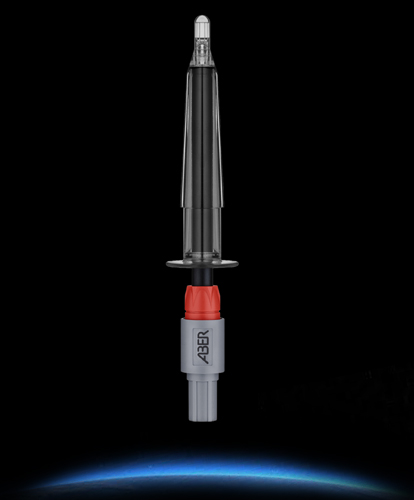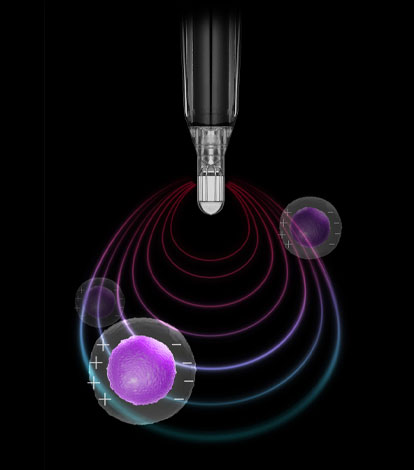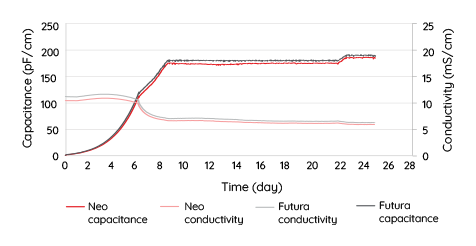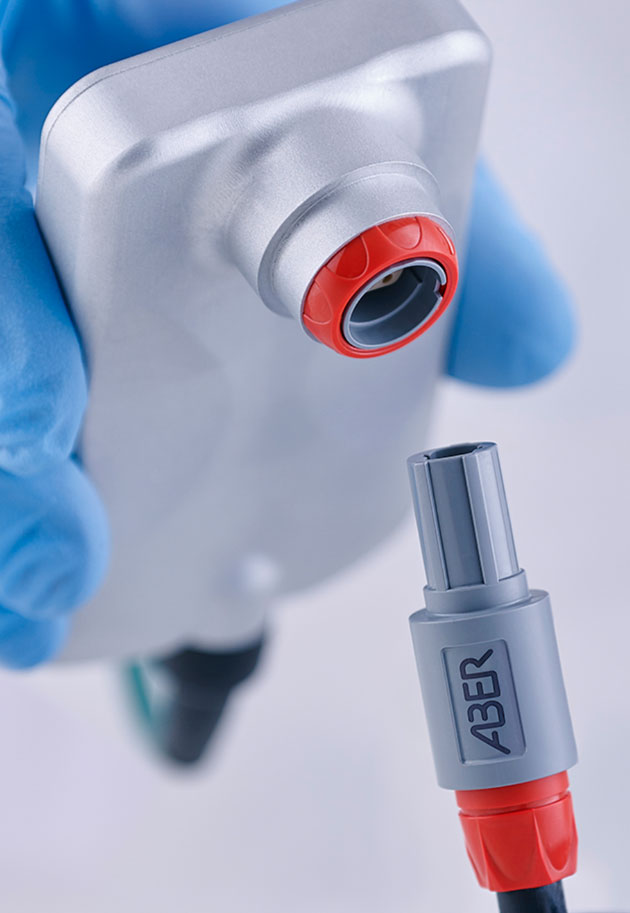Another giant step
for biomass monitoring
The world’s first capacitance sensor
designed exclusively for Thermo Fisher single use bioreactors.

Bringing you all the benefits of real-time,
seamlessly scalable, manufacturing ready technology.
The Principle of ABERs
Cell Capacitance Technology

Our measurement principle is based on capacitance. In an alternating electrical field, viable cells behave like small capacitors due to a build-up of charge across the cell membrane. The charge from these capacitors is measured and can be strongly correlated to cell density. Non-viable cells do not hold charge and as such, are not measured by the technology.
Key benefits of our single-use, manufacturing ready technology

Eliminate the need for regular sampling and congested labs

Track record of success in cGMP environments

Non-Disruptive Cell
Density Measurements

Automate control of critical events throughout your process via a continuous data stream

Troubleshooting tool to detect source of process deviation

Fingerprint your process for real-time detection of deviations

Improve the productivity and consistency of your process

Receive world-class support from the foremost experts in the technology

Reduce process contamination risk related to manual sampling
Application note
This application note summarizes the sensor’s function, integration into the Thermo Scientific S.U.B. BPC, and showcases functional cell culture data obtained both internally and with a primary customer.
The Futura Neo sensors have been specifically designed for the S.U.B.s to measure comparably with the reusable Futura annular sensors in reusable vessels, making Aber capacitance technology truly scalable across various platforms. The example below clearly demonstrates this comparable performance.

Figure 6 shows near-perfect alignment of the signals for the duration of the culture with a minimal variance of up to 2%. Both sensors showed the daily culture dilutions due to the bolus feeds with similar timing and magnitude. Conductivity readings are also nearly identical between the sensors.

